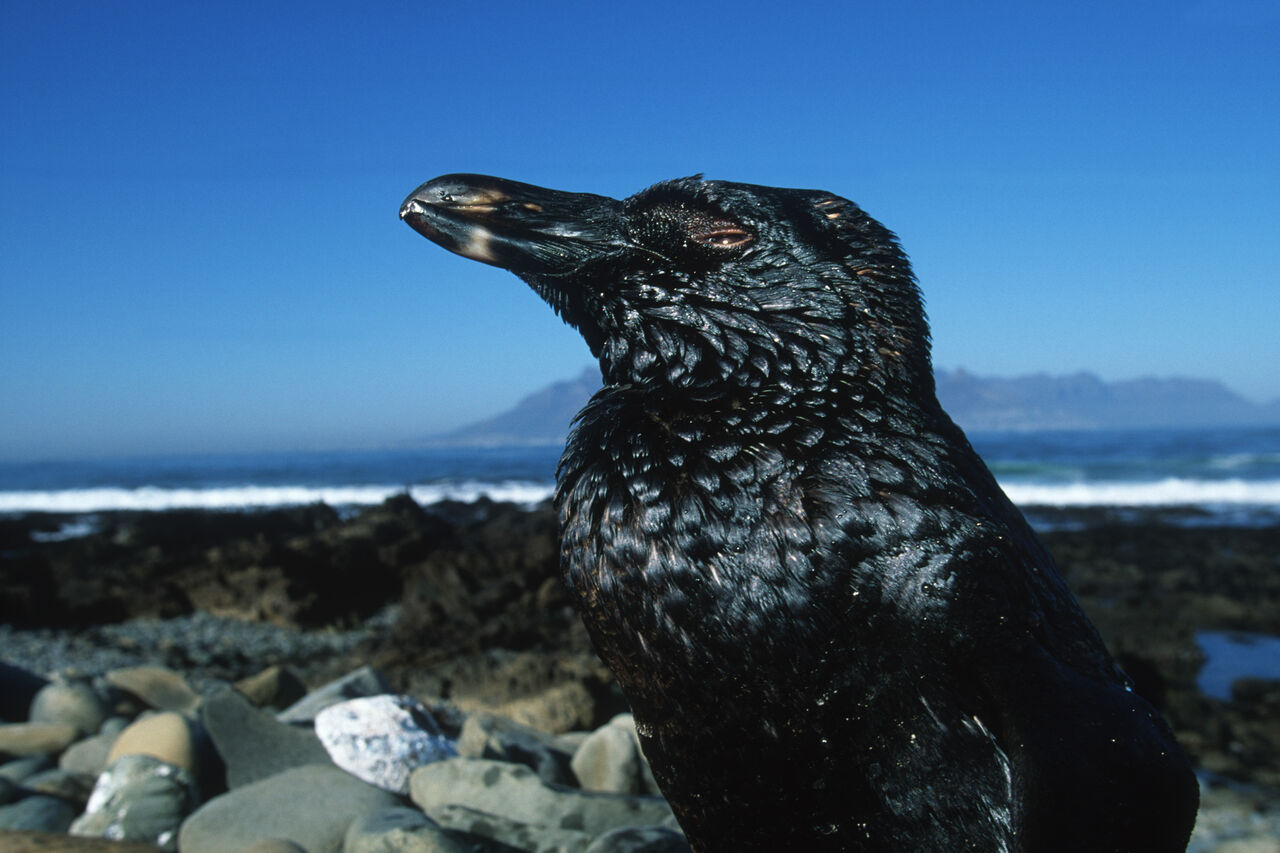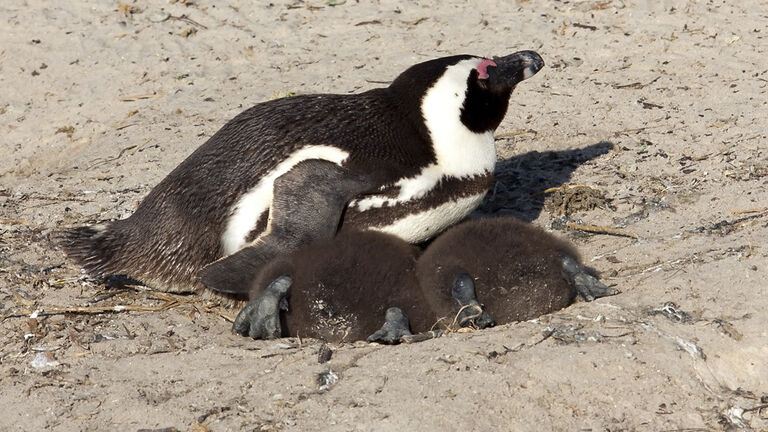African penguins are endemic to the coastlines of South Africa and Namibia. Unfortunately, they are currently listed as Critically Endangered on the IUCN Red List. They historically bred on islands, but they are more commonly seen in South Africa's two land-based colonies: one on Boulders Beach near Simonstown and the other on Stony Point near Betty’s Bay.
Male and female African penguins look nearly identical, and it is very difficult to tell the gender of a penguin without doing a genetic test.
Life stages of African penguins
Small chick
African penguins lay two eggs at a time. Both parents take turns incubating the eggs and feeding the chicks. It takes between 38 and 42 days for the eggs to hatch. Newly hatched chicks are blind and completely helpless. For the first 30 days of the chicks’ lives, the penguin parents protect and feed them around the clock.
Downy chick
The parents regurgitate fat- and nutrient-rich food for the chicks. This helps them to grow quickly and even double their weight within a week. When the parent birds go to sea to hunt for food, the chicks will huddle together in crèches, waiting on their return.
Blues or juvenile
From about two to three months old, the chicks’ downy feathers are replaced with the blue-grey plumage of the juveniles. After the chicks have moulted into their juvenile colours, they are ready to fledg,e and the parents leave them to fend for themselves. The juveniles go out to sea and can spend a year away from the colony. Once ready, they return to moult into their adult plumage.
African penguins need our help
In the early 1900s, there were between 1.5 and 3 million individual African penguins across the species’ range along the Namibian and South African coasts. It is estimated that there were close to 1 million pairs on the West Coast’s Dassen Island alone. However, by the mid-1950s, only 10% of these numbers were left due to egg harvesting and guano removal. Worryingly, since 1979, when the first count of the major South African colonies was conducted, the breeding population has declined from ~55 200 pairs to roughly ~8 750 breeding pairs in 2025.
To put this in perspective, if every wild breeding penguin in South Africa had a seat in the Ellis Park Stadium in Gauteng, South Africa, the stadium would only be one-third full!
The current African penguin population is at the lowest number ever recorded. With such a small number of individual birds in the wild, the population will be functionally extinct by 2035.
This means that the population will be so small that it will no longer be able to breed enough to increase numbers again. African penguins were "uplisted" to Critically Endangered on the Red List by the International Union for Conservation of Nature (IUCN) in 2024. If we want our children to see African penguins in the wild, the time for action is NOW.
If we wait any longer, it will be too late. We need healthy oceans to support marine life now and into the future, especially if we want our children to see African penguins in the wild.
Oil spills can kill
All birds have waterproof feathers, but on penguins, these feathers are short, broad and tightly spaced to keep water away from their skin. Tufts of down feathers on the feather shafts help to insulate the penguin’s body against the cold. See how the water runs naturally off our penguins when they leave the pool.
When penguins in the wild are covered in oil from an oil spill, their feathers are no longer waterproof. They can’t swim anymore because they get too cold. This means they can’t hunt for food and so they and their chicks die of starvation.
In the year 2000, a ship carrying iron ore, the MV Treasure, sank off Melkbosstrand on the West Coast. Thousands of litres of oil spilt into the ocean and threatened the lives of African penguins living on Robben and Dassen Islands near Cape Town. Nearly 19 000 oiled penguins were rescued by SANCOBB (Southern African Foundation for the Conservation of Coastal Birds).

